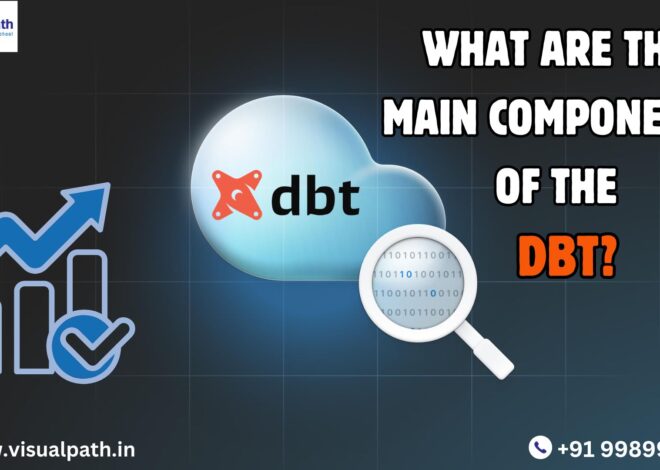
How to Use DBT (Data Build Tool) for Effective Data Quality Management
Data Build Tool Training is increasingly essential for data engineers and analysts striving to ensure data quality within their organizations. The need for reliable, accurate data across all functions has made it crucial to use tools that enhance data integrity while streamlining the ETL (Extract, Transform, Load) processes. The Data Build Tool (DBT) offers a robust solution to this challenge, providing a framework that empowers data teams to transform raw data in their warehouses and make it useful for downstream analytics. This article dives into how you can leverage DBT Training to set up a data quality management strategy that supports a clean, consistent, and actionable data pipeline.
With DBT Training, teams can better understand the mechanics behind DBT’s transformation capabilities and its impact on data quality. The framework offers a code-centric approach that enables users to create modular, reusable SQL queries for transforming data in a scalable way. It integrates seamlessly with modern data warehouses and supports modular, test-driven development, making it ideal for organizations aiming to establish a solid data quality management process. Let’s walk through how you can implement effective data quality management in DBT and why Data Build Tool Training is key to mastering this process.
1. Understanding DBT’s Role in Data Quality Management
Data quality management involves ensuring that data is accurate, complete, consistent, and relevant to its intended purpose. DBT addresses this need by enabling SQL-based data transformations that can be customized and validated. Through DBT Training, data teams learn to create models that clean, aggregate, and prepare data for analytics while enforcing data quality rules. DBT’s structured approach supports modular data transformations, which not only improve data reliability but also simplify tracking and debugging when data quality issues arise.
2. Using DBT for Data Testing and Validation
One of the most powerful features that Data Build Tool Training emphasizes is DBT’s ability to implement data tests. DBT allows users to define and apply tests directly within transformation scripts to validate data quality at every stage. For instance, you can check for duplicates, validate foreign key relationships, and ensure that numerical values are within expected ranges. Through DBT Training, users can learn to write these tests as part of their SQL transformations, embedding quality checks in the ETL process itself. This approach ensures data quality across various dimensions, such as accuracy and consistency, from the moment data enters the pipeline.
3. Implementing Modular Data Transformations
DBT enables a modular approach to data transformations, which enhances both scalability and data quality. By structuring SQL code into models, users can build transformation logic that is reusable, organized, and easy to maintain. Data Build Tool Training helps data teams understand how to create models that can be easily updated and tested, ensuring data quality standards are maintained throughout the pipeline. Each model in DBT represents a stage of transformation, allowing for isolated testing and validation. This modular approach makes it easier to identify and resolve any data quality issues at specific transformation steps without disrupting the entire pipeline.
4. Leveraging Version Control and Documentation
Maintaining data quality also involves having proper documentation and version control. DBT integrates with Git for version control, allowing users to track changes to data transformation logic and ensuring consistency in transformations over time. Through DBT Training, teams learn to document models, transformations, and tests directly within the tool, creating an accessible reference for all team members. This documentation enables a shared understanding of data transformation processes, making it easier to manage and monitor data quality across projects and over time.
5. Advanced Testing with DBT Macros and Packages
For more complex data quality requirements, DBT offers macros and packages that allow for custom transformations and tests. With DBT Training, teams can learn to create reusable SQL functions (macros) that standardize data quality checks across multiple models. For instance, macros can be used to validate time series data, apply consistency checks, or even enforce data thresholds based on business rules. Additionally, DBT’s package ecosystem allows users to import pre-built testing and transformation packages, streamlining the development of high-quality data pipelines.
6. Setting Up Automated Data Quality Workflows
A key advantage of using DBT for data quality management is the ability to automate workflows. Through Data Build Tool Training, data teams can learn to schedule and orchestrate DBT runs using tools like Airflow or Prefect. By automating data transformation processes, teams can ensure that data quality checks run consistently and reliably, minimizing manual intervention. Scheduled DBT jobs can automatically detect and alert teams about data quality issues, reducing the time needed to identify and address potential problems in the data pipeline.
7. Monitoring Data Quality with DBT
Monitoring is a continuous process in data quality management, and DBT makes it possible to monitor the success and performance of transformations in real time. With DBT Training, teams learn to use the tool’s logging and reporting features to track model runs, capture error rates, and evaluate transformation durations. Regular monitoring helps data teams understand the health of their data pipeline, anticipate data quality issues, and make adjustments to maintain high-quality standards.
8. Building a Data Quality Culture with DBT
Finally, successful data quality management is rooted in a strong organizational culture. DBT Training not only provides technical skills but also fosters a mindset of accountability and continuous improvement. By training all relevant team members in DBT’s data quality features, organizations can create a unified approach to data quality. This culture encourages regular data reviews, promotes transparency, and ensures that every team member is equipped to uphold data quality standards.
Conclusion
Incorporating DBT into your data quality management strategy can significantly enhance the accuracy, consistency, and reliability of your data pipeline. Through Data Build Tool Training and DBT Training, data teams can leverage DBT’s powerful transformation and testing features to address a variety of data quality issues, ensuring that data is well-prepared for analytics and decision-making. By embedding data quality checks in every transformation, documenting processes, and using modular, test-driven development, organizations can establish a sustainable data quality management system.
Visualpath is the Leading and Best Institute for learning in Hyderabad. We provide Data Build Tool (DBT) Training. You will get the best course at an affordable cost.
Attend Free Demo
Call on – +91-9989971070
What’s App: https://www.whatsapp.com/catalog/919989971070/
Visit: https://www.visualpath.in/online-data-build-tool-training.html



